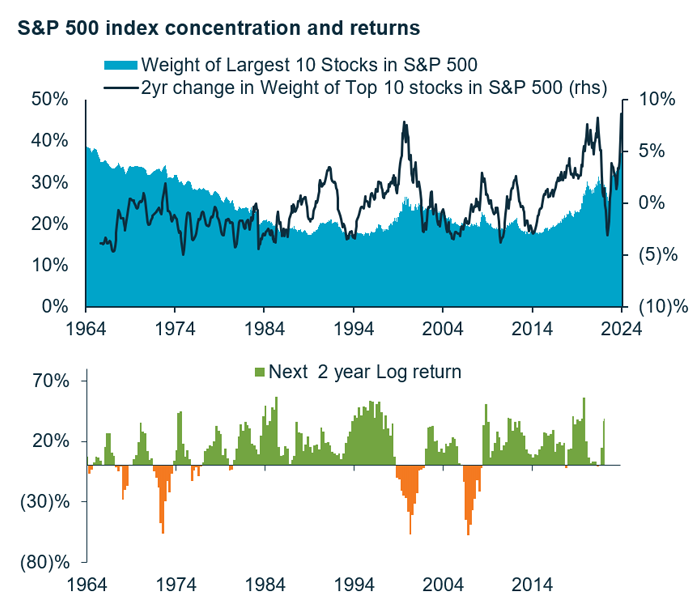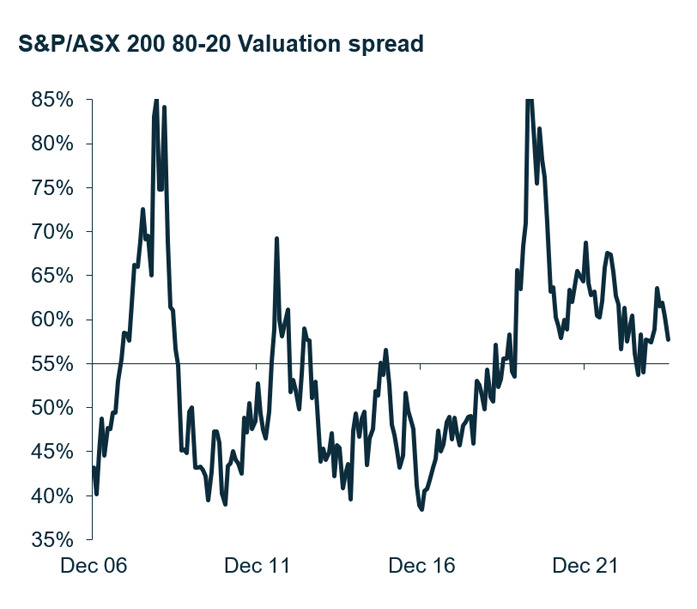The case for value in today's market (and 8 undervalued stocks)
While Growth and Momentum stocks have driven recent market performance, particularly by stocks in the tech sector, underlying economic indicators tell a different story about the future. We delve into the case for prioritising Value for a pathway beyond the current market conditions.
Style as a driver of global performance
Over the past year, style factors have significantly influenced global market performance. Global equities have generally performed well, with Growth stocks outperforming Value, particularly in the US. Bonds did well but lagged equities.
Within global equities, the Momentum factor has been a major contributor to performance(1), experiencing its strongest returns in two decades, largely driven by tech giants like NVIDIA (NASDAQ: NVDA). Price expansion, rather than earnings growth, has been the primary driver, pushing markets to historical peaks.

Disconnect between economic indicators and market performance
Typically, there is a strong correlation between market PMI levels and expected earnings growth(2). However, since March 2023, this relationship has weakened, partly due to the AI hype. Current PMI levels for the US, China, and Australia indicate contraction, contrasting with optimistic earnings growth projections. Everything now looks worse than our pessimistic forecast 12 months ago.
The inverted US yield curve, now more negative than even during the GFC era, signals poor economic prospects, suggesting a delayed impact on GDP growth. Despite anticipated rate cuts, economic pain may persist, as central banks are forced to cut rates in response to underlying problems in the real economy, not simply because they have resolved the inflation issue.

Challenges for the Australian economy
The old saying, “when the US sneezes, Australia catches a cold,” holds some truth that we should heed. Australia faces pressures from slowing global growth, rising US real rates, and concerns over China's property issues all affecting iron ore prices.
Australian profit margins are under strain due to high business and finance costs. Weaker business and consumer confidence indices further indicate corporate concerns about contraction in household budgets and falling profit margins(3). Additionally, higher inflation rates in Australia suggest at least a lengthy delay to rate cuts.

A bubble-like market environment with concentration risk at extremes
There is growing concern about distorted market prices driven by AI hype and large-cap stocks, reminiscent of the Tech Bubble. The Momentum leadership, particularly from the "Magnificent Seven" and large cap market concentration, has created market exuberance. US market P/E multiples suggest unrealistic assumptions about sustained high profit margins and return on equity.
Analysing the S&P 500 since 1964(4) reveals a correlation between high index concentration in the top 10 stocks, and changes in the level of index concentration leading to poor market performance. Increased concentration often precedes market downturns, highlighting risks associated with Momentum and US stocks.

Significant potential for undervalued Value stocks
Our analysis of the macro story paints the picture of things at extremes, including Valuation dispersions. The market's preference for Growth and Momentum has widened valuation gaps, making Growth stocks more expensive and Value stocks cheaper than normal.
Our analysis of Australian stocks using factors and our investment team’s proprietary Valuations shows extreme valuation spreads between high and low Momentum and Growth stocks, while Value and Quality stocks remain severely undervalued. This means you are paying much more for Momentum and Growth versus Value and Quality stocks than normal.
The 80-20 spread, which measures dispersion between the cheapest and most expensive parts of the Australian market, is wider than average(5). These conditions suggest a potential outperformance of Value stocks as extremes unwind to more normal levels of dispersion.

Importance of value balance in multi-asset positioning
For investors in multi-asset strategies, appropriate asset allocation is crucial for future returns in the current investment landscape. It is crucial to adopt a balanced approach and position for the eventuality that the Momentum bubble will burst.
Our Martin Currie Australia Diversified Growth strategy has a neutral asset allocation of 70% growth assets and 30% in their defensive counterparts, with asset selection driven by our overarching Value philosophy.
We are currently relatively neutral on our growth / defensive mix(6).
- Within our defensive positioning, we are close to neutral on our mix between Australian and Global bonds.
- However, within our growth exposure, our views on the Momentum bubble encourage us to be more weighted towards Real Assets (such as real estate, utilities and infrastructure), and underweight Australia and Global equities.
- We like both Australian and Global Real Assets given that interest rates are closer to peak cycle and that they are priced at a significant discount.
- Within Australia equities, our largest weight is toward our Value Equity portfolio.
Defensive, quality potential in value portfolios
As contrarian Value investors, our Martin Currie Australia Value Equity portfolio is more distinct from the index than ever, and our high active share reflects our conviction in our stock ideas.
It is common for our portfolio to have higher sensitivity to market movement; however, we are finding greater Value upside opportunities among the more defensive, higher quality companies. We are therefore maintaining our portfolio beta at its lowest ever ratio outside of the lead-up to the GFC, allowing better Valuation potential but with less risk than normal.
Our portfolio currently resembles a barbell with undervalued defensive names that can weather economic downturns, and stocks that can grow despite resilient inflation. Preferred names include(7):
- Insurers QBE Insurance Group (ASX: QBE) and Medibank Private (ASX: MPL),
- Defensive stocks like Telstra Group (ASX: TLS) and Aurizon Holdings (ASX: AZJ) with resilient earnings and good pricing power,
- Stocks facilitating energy distribution such as Worley (ASX: WOR) and Ventia Services Group (ASX: VNT).
- AGL Energy (ASX: AGL), where the energy transition is creating a shortage of electricity production.
- Flight Centre Travel Group (ASX: FLT), where the market is undervaluing cost efficiencies and margin leadership.
- We are avoiding consumer discretionary stocks impacted by contraction in household budgets.
The time for value investing
The timing of style cycles is difficult to predict, but we believe that current conditions favour Value investing, either as a stand-alone equity allocation, or in driving broader multi-asset portfolio weights. Value-style stocks are cheap, while Growth stocks remain overpriced. As valuation spreads narrow, Value style strategies offer a strong starting point.


9 stocks mentioned
2 funds mentioned

